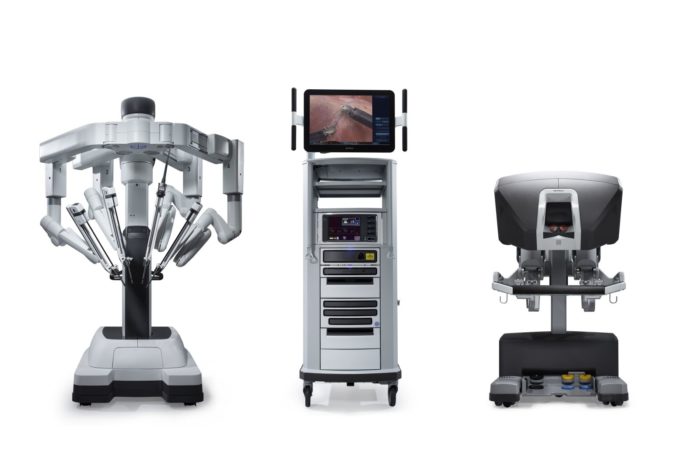PROVIDED/Shore Medical Center surgical leadership team poses with the new da Vinci Xi surgical robot at the dedication ceremony, where the robot was named after Dr. Leonard Galler. Pictured from left is Ronnie Vrabel, RN, BSN, Assistant Manager of the Operating Room; Jacqueline Evenson, CNOR, RNFA, Surgical Clinical Supervisor, OR & Robotics; Dr. Leonard Galler, Clinical and Administrative Chairman of the Department of Surgery; and Karen Burns, RN, BSN, CNOR, Manager Operating Room and Sterile Processing Department.
SOMERS POINT - Shore Medical Center has announced the recent acquisition of the da Vinci Xi surgical robotic system by Intuitive, designed with the goal of further advancing technology used in minimally invasive care.
The first robot assisted surgery was performed at Shore on Oct. 17 during a robotic hernia repair by Dr. James Tayoun.
We are thrilled to welcome latest robot technology to our surgical capabilities at Shore Medical Center, Department of Surgery Administrative Chairman Leonard Galler, MD, said. The da Vinci Xi offers enhanced visualization for our surgeons, smaller incisions, expedited recovery and pain mitigation for patients and, subsequently, a diminished need for narcotics. The robot's precision and dexterity also enable us to better conduct surgery in complex areas, such as the lower abdomen, reducing the potential for surgical trauma and infection.
 The da Vinci Xi Surgical Robot is composed of three parts: the surgeon's console, the patient cart (pictured) which holds the camera and instruments that the surgeon controls from the console, and a vision cart.
The da Vinci Xi Surgical Robot is composed of three parts: the surgeon's console, the patient cart (pictured) which holds the camera and instruments that the surgeon controls from the console, and a vision cart.
The robotic-assisted surgery system extends the capabilities of a surgeon's eyes and hands. Surgeons stay in the operating room and use their hands to control a camera and surgical instruments that perform the procedure while viewing the entire operation in 3DHD. The 3DHD vision system provides surgeons a highly magnified view, virtually extending their eyes and hands into the patient. The tiny instruments have an even greater range of motion, with built-in tremor filtration technology to allow each move to have smooth precision.
Rather than having to have an open surgery, where the surgeon makes incisions long enough to see the entire surgical area and perform the procedure using handheld tools, this minimally invasive surgery allows for the surgeon to conduct the surgery using a camera and long thin instruments through a small incision ranging in size from 8-13 millimeters. The surgery results in shortened hospital stays and recovery times compared to open surgeries.
The robot is being used for minimally invasive surgical procedures such as colorectal surgery, general surgery, gynecologic oncology surgery, gynecologic surgery, hepatobiliary surgery, pediatric general surgery and urological surgery.
The robot at Shore has been named Lenny in honor of Dr. Leonard Galler.